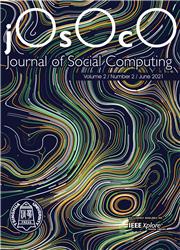Developing an Integrated IoT Cloud Based Predictive Conservation Model for Asset Management in Industry 4.0
引用次数: 0
Abstract
With the advent of Industry 4.0 (I4.0), predictive maintenance (PdM) methods have been widely adopted by businesses to deal with the condition of their machinery. With the help of I4.0, digital transformation, information techniques, computerised control, and communication networks, large amounts of data on operational and process conditions can be collected from multiple pieces of equipment and used to make an automated fault detection and diagnosis, all with the goal of reducing unscheduled maintenance, improving component utilisation, and lengthening the lifespan of the equipment. In this paper, we use smart approaches to create a PdM planning model. The five key steps of the created approach are as follows: (1) cleaning the data, (2) normalising the data, (3) selecting the best features, (4) making a decision about the prediction network, and (5) producing a prediction. At the outset, PdM-related data undergo data cleaning and normalisation to get everything in order and within some kind of bounds. The next step is to execute optimal feature selection in order to eliminate unnecessary data. This research presents the golden search optimization (GSO) algorithm, a powerful population-based optimization technique for efficient feature selection. The first phase of GSO is to produce a set of possible solutions or objects at random. These objects will then interact with one another using a straightforward mathematical model to find the best feasible answer. Due to the wide range over which the prediction values fall, machine learning and deep learning confront challenges in providing reliable predictions. This is why we recommend a multilayer hybrid convolution neural network (MLH-CNN). While conceptually similar to VGGNet, this approach uses fewer parameters while maintaining or improving classification correctness by adjusting the amount of network modules and channels. The projected perfect is evaluated on two datasets to show that it can accurately predict the future state of components for upkeep preparation.基于集成物联网云的工业4.0资产管理预测守恒模型研究
随着工业4.0(I4.0)的到来,预测性维护(PdM)方法已被企业广泛采用,以处理其机械的状况。在I4.0、数字化转型、信息技术、计算机控制和通信网络的帮助下,可以从多台设备中收集大量关于操作和工艺条件的数据,并用于进行自动故障检测和诊断,所有这些都旨在减少计划外维护,提高部件利用率,以及延长设备的使用寿命。在本文中,我们使用智能方法来创建PdM规划模型。创建的方法的五个关键步骤如下:(1)清理数据,(2)对数据进行归一化,(3)选择最佳特征,(4)对预测网络做出决策,以及(5)生成预测。一开始,与PdM相关的数据会经过数据清理和规范化,以使一切正常并在某种范围内。下一步是执行最佳特征选择,以消除不必要的数据。本研究提出了黄金搜索优化(GSO)算法,这是一种用于高效特征选择的强大的基于群体的优化技术。GSO的第一阶段是随机生成一组可能的解决方案或对象。然后,这些对象将使用简单的数学模型相互作用,以找到最佳可行的答案。由于预测值下降的范围很广,机器学习和深度学习在提供可靠预测方面面临挑战。这就是我们推荐多层混合卷积神经网络(MLH-CNN)的原因。虽然在概念上类似于VGGNet,但这种方法使用较少的参数,同时通过调整网络模块和信道的数量来保持或提高分类的正确性。在两个数据集上对投影完美度进行了评估,以表明它可以准确预测组件的未来状态,以便进行维护准备。
本文章由计算机程序翻译,如有差异,请以英文原文为准。
求助全文
约1分钟内获得全文
求助全文

 求助内容:
求助内容: 应助结果提醒方式:
应助结果提醒方式:


